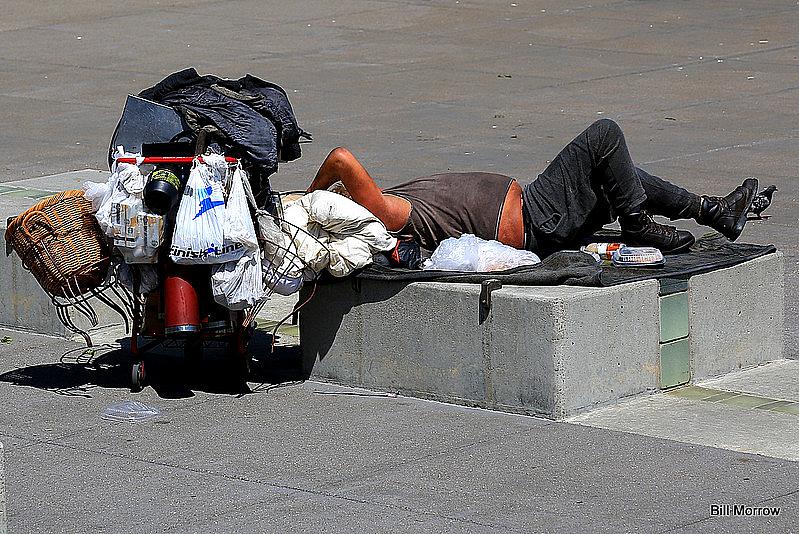Can a problem-plagued department fulfill a billion-dollar plan to address SF’s homelessness?

(Photo by Bill Marrow via Flickr/Creative Commons)
Well before city officials declared a state of emergency over COVID-19, roughly 1% of San Franciscans were already suffering from an urgent crisis — homelessness.
Four years earlier, the city’s legislative body declared a state of emergency on homelessness as large tent encampments covered entire blocks of sidewalks and freeway underpasses. It was also around this time that the mayor announced a new city department dedicated to helping thousands of unhoused San Franciscans exit the streets using shelters, housing and support services.
Yet in the pandemic, the city was caught flat-footed when it came to providing for its most vulnerable residents. Its response to this particular crisis so far has been uneven and often controversial.
The city’s Department of Homelessness and Supportive Housing is the main agency that oversees San Francisco’s sheltering and service operations — and it has little to no oversight. A city legislative analyst report recently slammed the department for fiscal mismanagement and problems with staffing and data systems.
Now that same department is in charge of a $1 billion budget to move forward on several new programs proposed by the mayor to add to the city’s sheltering systems and services.
One silver lining of the pandemic is that San Francisco has been forced to account for how many people it is sheltering through its COVID-19 alternative housing. This is a start, but it’s only following 2,200 people.
Data will be a big part of this investigation, supported by a 2020 Impact Fund grant, as we tell the story of how this four-year-old department is working to move people from these hotels. Are they getting the mental and physical health care so many desperately need? Are they making progress toward permanent housing? What are their racial, ethnic and gender affiliations?
We want to look inside this department to understand how it is structured and what the gaps are within it that have caused it to fall short of its mission.
Another part of the city’s bigger budget for homelessness is the addition of more sheltering options. This includes the movement of up to 1,000 people into group shelters, even as COVID-19 is still spreading in the community. Last spring, these shelters were all shut down to halt the spread through their populations, who often face higher health risks than housed people.
This story is about access to housing and shelter, but it’s also about equity and access to testing and vaccines for this vulnerable population. We’ll examine San Francisco’s overall record of caregiving for its unhoused people during the pandemic; what has gone right and wrong; and why the dire predictions of a wave of COVID-19 deaths and injury among the homeless hasn’t materialized while other comorbidities — like drug overdoses — have.
Finally, we will look into the biggest focus of the city’s homeless recovery efforts: the chronically homeless. City officials estimate this population to be about 4,000 people. Prior to COVID-19, the city announced Mental Health SF, which promised a lot: wraparound services for people who move into permanent supportive housing, and street teams of social workers to answer some of the 911 calls once answered by police.
COVID-19 has hampered this program to some degree. For instance, a 24/7 drop-in clinic that was set to open has been delayed. The hope had been to put four teams of outreach counselors together to hit the streets, but, for now, there is only one.
We’ll examine if this effort can help the city’s residents, housed or unhoused, who are in crisis. We’ll also delve into whether access to these services is equitable.
San Francisco’s Black and Latinx communities don’t have the access to health care that other populations do. COVID-19 testing was late in coming to these groups. Among unhoused San Franciscans, these communities have a high representation relative to their overall share of the city’s population. We want to see whether these patterns exist in access to mental health care as well.
As we’ve ended a tumultuous year and begin a new one, it’s crucial to look closely at how officials, service providers, policymakers and others are helping San Francisco’s most vulnerable residents find housing in a pandemic-curtailed shelter system, and to make clear the impact of housing uncertainty on their mental and physical health.
